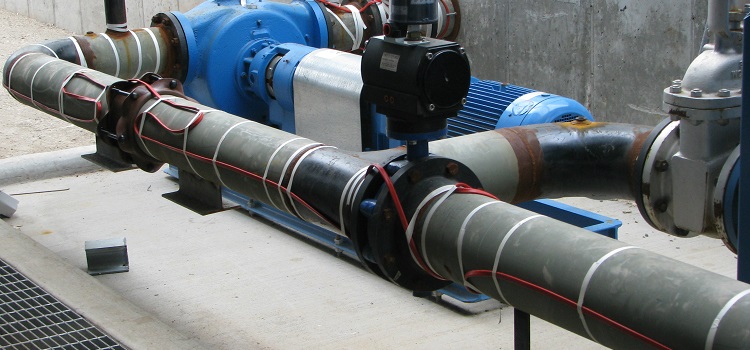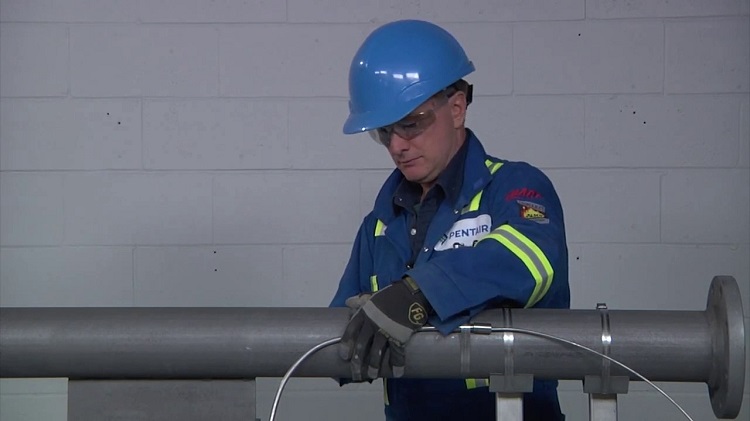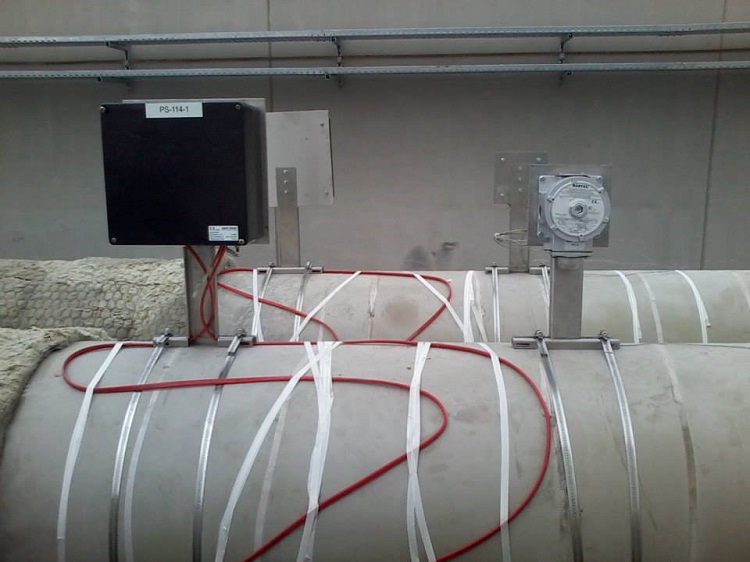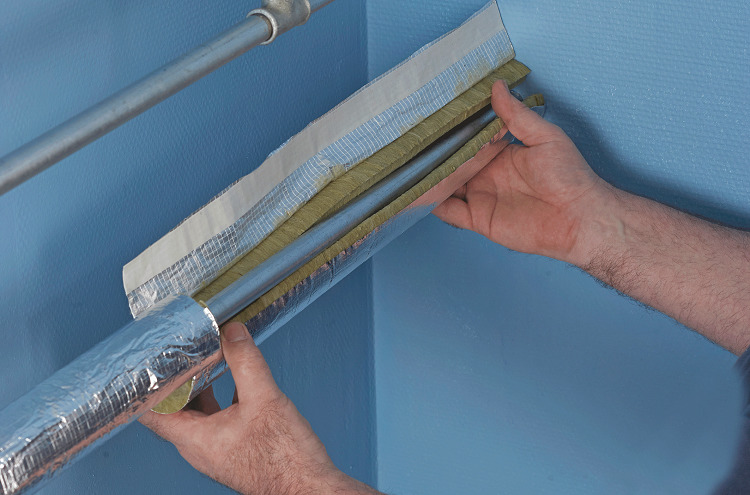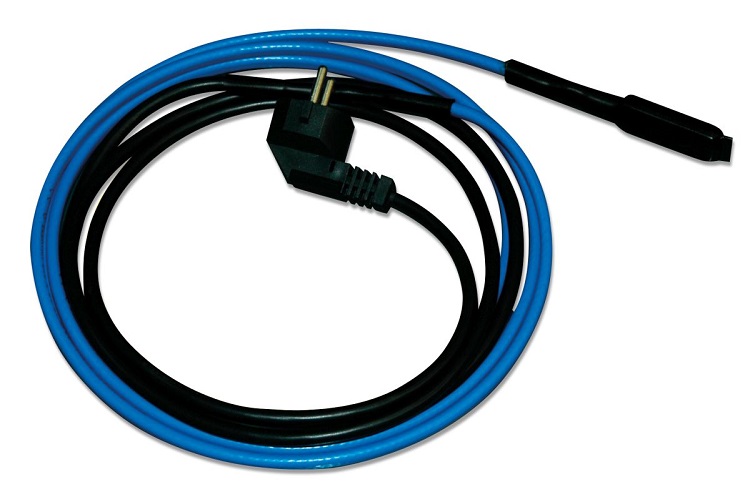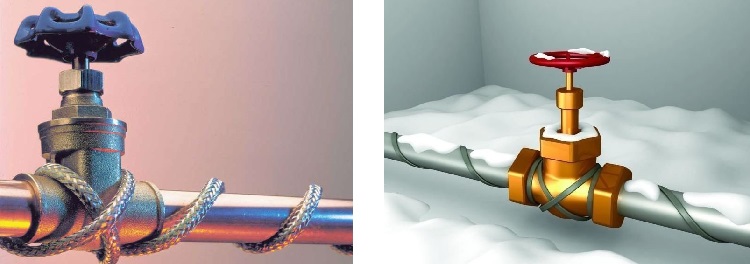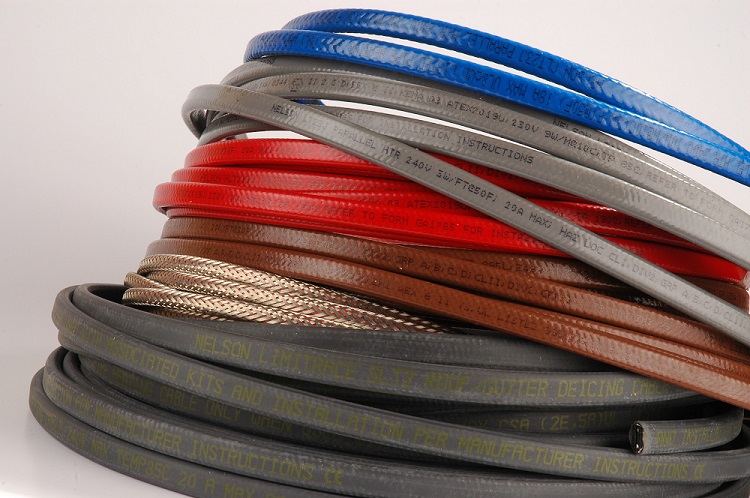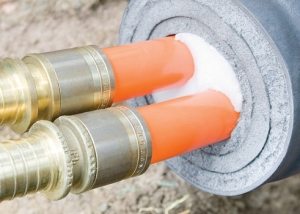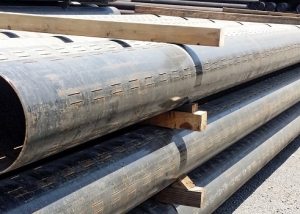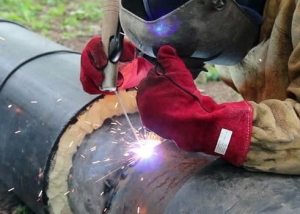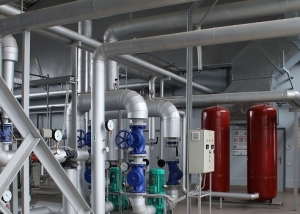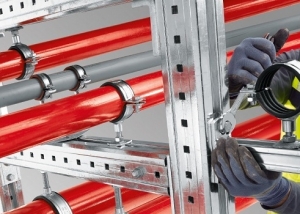Underground installation of water and sewer communications is in most cases lower than the level of freezing of the soil. However, in some cases, various factors interfere with the laying of the pipeline at the desired depth. In such situations, as a rule, heat-insulating materials are used, which relate to passive frost protection, as well as active methods of insulation (electrical cable, thermal film).
Content
Active pipeline protection methods
Today, there are several ways to actively protect underground water pipes and sewer lines from freezing, among which:
- an electric cable that is mounted outside the pipe;
- electrical cable laid inside the communication;
- thermal film.
The most common protection method is the installation of a heating cable on the surface of a pipeline structure. The first models of such electric cables had a number of disadvantages: length limitations, large energy costs, etc. Modern electric cables for pipes do not have such disadvantages and are made from materials whose resistance indicators depend on temperature. External cables for heating water and sewer pipes are divided into two main groups:
- resistive;
- self-regulatory.
The second way to actively protect the pipeline structure from the effects of low temperatures is to heat inside the pipe. Laying the cable inside the communication is allowed in all areas except shutoff valves, as it can damage the electrical cable.
The advantage of this method of heating water and sewer pipes is to minimize heat loss. This is due to the fact that with the external location of the electric cord, part of the energy is dissipated in the environment. However, to stretch the heating inside the pipe is not as simple as laying a cord on its surface.
Important! The cable laid internally must comply with all necessary standards and requirements. It should have a good coefficient of strength and stiffness. It is strictly forbidden to mount ordinary heating wires inside the pipes.
The third method of heating communications, which are mounted underground, is the most modern, however, it is less popular than previous options. The use of thermal film allows for uniform heating of the pipeline. Thermofilm is a structure that consists of fiberglass and conductors, as well as several protective layers. Thermal film is characterized by high strength characteristics, which allows it to be resistant to mechanical damage. Fixing such a film to the surface of the pipeline is quite simple.
What are the functions of cable heating systems?
Many people are convinced that cable frost protection of piping structures removes ice from plumbing and sewer systems. However, first of all, artificial heating of communications is necessary in order to exclude the possibility of freezing of the working medium, which moves through the pipes.
Consider the main functions that cable heating systems perform:
- maintaining the necessary temperature of the working fluid, which is transported through pipelines;
- active heating systems can minimize heat losses that occur during transportation of the working medium through the system;
- allow for the normal operation of pipeline structures that transport other media. For example, mineral type oils, the physical characteristics of which depend on the temperature index;
- the use of cable systems to protect pipelines from freezing can reduce financial costs, as well as labor costs when laying this or that design;
- Artificial heating of sewers and water supply systems minimizes the risk of breakdown in these structures. Due to this, the cost of repairs is significantly reduced.
Benefits of using electric cables to heat pipes
Heating the water supply and sewerage by means of special electric cords has several advantages, which are worth considering in more detail:
- the use of electrical cords allows you to achieve the required indicator of the temperature of the working medium transported by communication;
- electrical cables make it possible to exclude the accumulation of various impurities in the pipeline structure, the freezing temperature of which is lower than that of the main medium;
- this method of heating the pipelines prevents stagnation in the pipes;
- thanks to the artificial heating of the system, the movement of viscous working fluids is simplified;
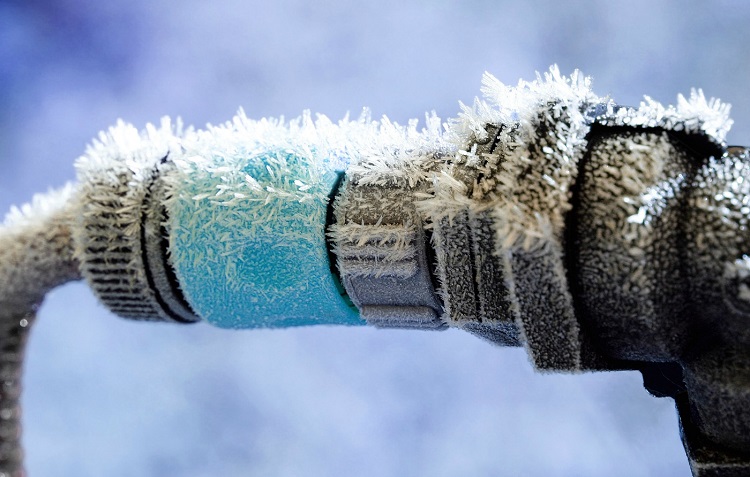
Heated pipes will help to cope not only with icing, but also with the formation of condensate at a temperature difference
Helpful information! Structures equipped with active anti-freeze protection usually function without interruption.
- condensation on the outer surface of the pipes is excluded;
- the occurrence of an ice crust on the surface of the pipeline is prevented;
- a system that is equipped with cable heating does not have to be laid below the freezing point of the soil, which simplifies installation;
- such cable systems have a fairly reasonable cost;
- simple installation, which, if desired, can be done with your own hands by any person who does not have special construction skills and knowledge.
Among the minuses of this system can be noted the energy consumption that will be required to heat the water supply or sewage.
The device and varieties of heating cables
As mentioned above, the cable method of heating pipes is the most common. This is primarily due to the fact that it is the most acceptable, in terms of cost, and also very convenient. There are two options for mounting such cables to the pipeline:
- installation along the pipeline;
- winding communication.
The choice of layout depends on the specific case and on the preferences of the owners of the house. Cable heating systems include several structural elements:
- launch systems located in a special shield;
- aluminum tape. It is necessary to isolate the heating system;
- directly cable;
- a device that controls the temperature indicator;
- insulating material.
The configuration of heating systems may vary depending on technical specifications.For example, in some cases, the presence of a temperature regulating device is not necessary, since self-regulating cords (consisting of two cores) are automatically heated to the desired temperature.
Today you can find on sale two varieties of heating cords:
- resistive;
- self-regulating.
Resistive cable
By design, such devices are similar to an elongated boiler. In this case, a wire acts as a heating element. The heating itself is performed quite qualitatively and evenly over the entire length of the cord. In addition, such products can be sold in shortened form (segments), which allows you to choose the required length.
Note! It is strictly forbidden to independently shorten the original length of the resistive product.
Depending on the number of cores, such products are divided into:
- single core;
- two-core.
Heating sewer and water pipes with a single-core cable is considered less convenient. This is due to the fact that due to the presence of only one core, it is necessary to supply electrical energy from both ends of the cord. Twin-core cords for heating pipelines are more convenient, since they include a second core. The presence of a second core avoids the two-way connection of the cord to electricity. One core in such products performs heating functions, and the second acts as a conductor of electrical energy.
The main advantage of resistive devices is their affordable cost, which, as a rule, is 50% lower than that of self-regulating heating cords for pipes. But the disadvantages of such products are more:
- communication heating with the help of such devices is carried out uniformly over the entire length, so raising the temperature at a certain point is impossible;
- if the wires are crossed, such a device can easily fail;
- the inability to independently adjust the length of the heating product;
- average efficiency. This is due to the fact that such devices are heated to the same temperature along the entire length. Thus, communication heating is performed equally at all points, even if some of them do not need it.
Self-adjusting cable
This kind of heating cords is the most functional, however, the cost of such devices is about 2 times the price of resistive analogues. Pipe with self-regulating heating is the most suitable solution, since heating is performed only in cold sections of the pipeline. The intensity of heating a pipe with such a cable is directly proportional to its cooling.
Self-regulating cords include two conductors that are joined together by a temperature-regulating matrix. Such a matrix is made of a special material that is capable of conducting current and regulating its intensity. Ambient temperature directly affects the current regulation by the matrix.
Self-regulating cords are used in various fields, but are most popular in private construction. Most often they are used to organize the heating of the pipe, which is laid from the well in a private area.
Consider the main advantages of self-regulating heating devices:
- automatic regulation of heating;
- uneven heating, allowing you to warm the necessary sections of the pipeline structure;
- device length regulation;
- the electric cord can be mounted in two layers without fear of overlap;
- simplicity of design, which is achieved due to the automation of the power cord.
Selection options
When choosing an electric heating cable, it is recommended first of all to determine the power indicator. The power of the cord that heats the sewer or water supply depends on several factors. Consider them:
- depth of communication;
- the material from which the pipes are made;
- pipeline cross section indicator;
- pipe wall thickness;
- pipeline length;
- technical properties of heaters.
After determining the required power, which the electric cord for pipe heating must comply with, it is necessary to pay attention to the operating conditions in a particular situation. Depending on them, it is determined what the cord should be. An important selection parameter is the cost of the cable.
It is quite difficult for a person who does not have knowledge in this area to make the right choice of this product, since it is necessary to take into account a large number of factors and features in a particular situation. Therefore, it is recommended to contact specialists who will help you in this matter.
Indoor installation of heating cable
It is allowed to heat the water pipes with a cable that is mounted outside the water supply only if the cross-sectional indicator of the pipeline structure allows this to be done. The internal heating method is used if it is not possible to lay the cable outside (for example, the pipeline is covered with concrete mortar).
Important! For laying inside the pipe, it is strictly forbidden to use resistive electrical cables, which consist of one core.
Consider two important properties that an electric cord laid inside a pipeline structure should have:
- high coefficient of moisture resistance;
- resistance to acidic environment.
To install a moisture-resistant cable inside the water supply pipeline, you must perform the following steps:
- The cable is inserted into the water supply system. For this, it is necessary to use a special coupling, which is screwed onto the communication at the exit point.
- Next, you need to stretch the power cord to the desired length.
- At the third stage, the opposite end of the electrical cable is docked with the electrical network.
The efficiency of this method of heating a pipeline structure is usually 50% higher than that of an outdoor cable installation. Thanks to this, it is allowed to use heating cords that have less power. The internal method of arrangement of the heating product allows you to save on heat-insulating material, since heating is performed better.
However, this method has its drawbacks. Consider them:
- heating of sewer pipes using this method is excluded;
- internal installation of an electric cord for heating is not possible if cranes and bends located at an angle of 90 degrees are present in the pipeline structure;
- one more minus of such installation is a reduction in communication throughput due to a decrease in the space inside the pipeline;
- over time, salt deposits accumulate on such cables, which leads to overgrowth of the pipe lumen.
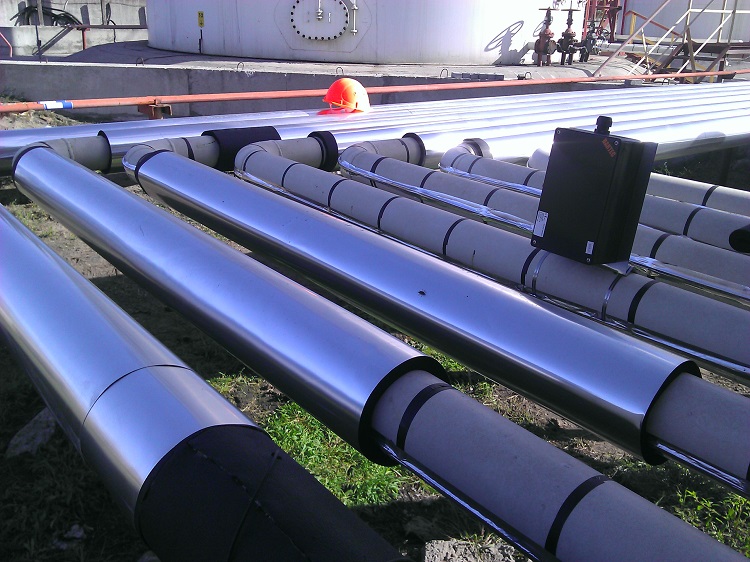
For external installation, the cable is fixed to the pipes with metal tape or clamps at regular intervals
Outdoor installation of heating cable
The outer option of laying a heating cord is the most suitable. This method is simple and practical. For outdoor installation, it is allowed to use any kind of electrical cable. The external method takes into account the use of a special aluminum film, which is necessary in order to reliably fix the wire. After the installation and fixation of the cable is completed, the resulting structure is insulated with a heat-insulating material.
Consider two options for installing an electrical cable outside the pipeline:
- the cable is attached by tape on one side of the communication. In order to increase the area of contact of the product with the surface of the pipeline, the cable is laid in a wave;
- the second installation option, as a rule, is suitable for northern regions that differ in severe climatic conditions. Pipes in such regions are wrapped with a heating cable (the step of one turn is approximately equal to 5 cm). After laying the cable, it is wrapped with foil tape for reliability.
Important! When wrapping pipes with an electric cord, it is recommended to take into account one important indicator - the coefficient of permissible bending. If the bend of the cable exceeds the permissible norm, then the power supply will be complicated.
The advantages of this method of installing an electric cable include:
- external installation of a heating electric cord can be performed by anyone;
- with this installation of the wire there is no decrease in the clearance of the pipe;
- the cable installed on the outside of the pipe is easy to diagnose. Therefore, breakdowns are detected and eliminated much faster than in the case of a cord located inside the communication.
Finally, we will get acquainted with tips for the outdoor installation of the heating cable:
- installation of this device can be carried out in such a way that one of its segments will be located on the street, and the second - indoors. In such a situation, experts recommend the use of self-regulating varieties of electrical cords;
- products mounted for private purposes, it is advisable to connect through a leakage current relay. This will protect residents from electric shock.
Installing a heating cable is one of the most reliable methods for ensuring the operation of the water supply system in winter. Such a device can be purchased without special difficulties, but it should be installed and operated in strict accordance with safety rules.
